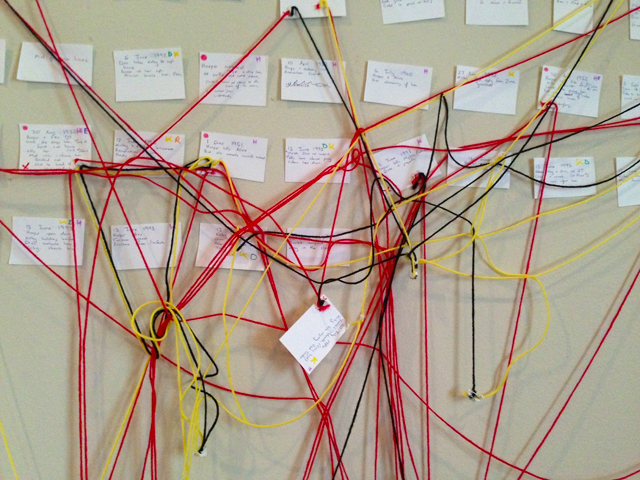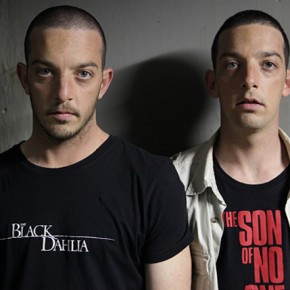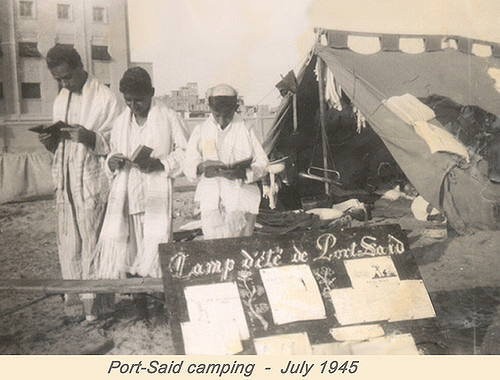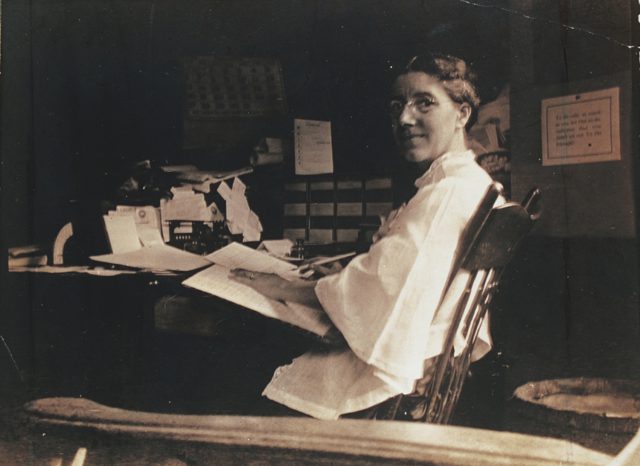Serial killer fiction and time travel fiction are two troubling genres. At its worst, the serial killer story offers the cheap thrill of watching a charming genius killing at will. And time travel can be an irritating, messy plot device that hogs the spotlight and drains a story of its reality. But South African writer Lauren Beukes’ third novel The Shining Girls avoids these pitfalls. Sure, it could have been an obscenely high-concept slashfest. But don’t worry, it’s not.
Beukes, instead, has written a story of sepia tones and sad laughter, in which both the serial killer and time travel elements take a decidedly background role to the emotional reality of violence, in particular against women. And somehow, for a book that deals in such pitch-black subject matter, it remains lively, with alternating moments of gee-whiz historical facts and truly frightening suspense.
She pulls this off, mostly successfully, by fixating on the characters impacted directly and indirectly by a cycle of violent acts carried out over the span of six decades, making the victims and their cultural settings — which whir by the serial killer as he hunts across history — the core of the story. The impact of the book comes, not from the bursts of stylized violence we often see in tales of murder, but the ripples of emotion that surround the violent acts. Similarly, the time travel element remains mostly ambient, a tool to show how those impacts manifest in the long term, and to establish a steady drumbeat of abuse throughout modern history.
This is probably best summed up in the book’s strongest line, as the central killer Harper reflects on his early time travel experiences: “The future is not as loud as war, but it is relentless with a terrible fury all its own.” He’s referring to the noisy march of progress, but it’s a fitting description for the overall sentiment that Beukes delivers in The Shining Girls.
In the novel, a Depression-Era sociopath named Harper, who has previously committed mostly random acts of violence in and around Chicago, stumbles onto a house with an interior that exists out of time and allows him to walk out into any moment he can imagine between 1929 and 1993. In one room he finds a collection of objects from throughout this time period, which he either leaves with or takes from his victims, creating an eerily anachronistic trail of keepsakes. The main narrative surrounds one of Harper’s targets during the early 1990s, Kirby, who survives the attack and becomes obsessed with tracking him down, eventually with the help of a crusty Chicago Sun-Times reporter.
As the main characters hunt for the killer in 1993, the murders unfold intermittently throughout the novel and across the six decades. One by one, Beukes introduces us to the women — a black welder building ships during World War II, a transgender showgirl, a lesbian architect breaking into her all-male field during the Red Scare, an aide in an illegal abortion clinic in the years leading up to Roe v. Wade — providing all-too-brief glimpses of their personas and surroundings. Beukes did painstaking research for the book, and each character is set in a detailed snapshot of Chicago during her era, from filthy shanties of the Depression to punk clubs of the early 1990s. And in each, the character sticks out glaringly in some way, like a beacon of potential or a progressive glitch in her cultural setting.
Unlike the placeholder victims in abysmal torture porn films, Beukes allows us (or forces us) to sit with these people for a while, just long enough to get to know them and like them before Harper shows up, and takes each one away from us in a moment of violence. After about the third murder an unsettling rhythm of violence emerges, and none of it glamorous.
It’s worth noting that the author has some personal connection to this subject matter. Beukes has described in interviews surrounding the release of the novel that she became enmeshed in the trial of a man who murdered his girlfriend, an acquaintance of hers, but escaped conviction. Beukes has said writing The Shining Girls was a kind of exorcism of that experience, and that she wanted to tell the story behind the victims of violence instead of glorifying a perpetrator.
She does this, in part, by casting the scenes of violence — of which there are many, some quite graphic — from the perspectives of the victims. For example, the scene in which the hero Kirby is nearly murdered by Harper is ice cold and stomach turning. You can feel every wound, every shoot of panic and hope.
But Kirby survives, becoming the one victim we’re allowed to stick only with her for more than the chapter of her murder. We watch her obsessively pick away at the past in the years following the attack, cataloguing the many, many murders in Chicago over time. She’s an endearing protagonist, heavily scarred but not broken, a punk in combat boots and wild curly hair. We’re shown intimately how the attack has affected her life and the lives of the people around her like her mother, boyfriends and acquaintances.
Some of the dialogue is a bit awkward, particularly in early interactions between Kirby and Dan, her reporter sidekick. Their partnership forms quickly and is hard to believe at first. Some of their jokes and moments of insight can feel forced. But the characters gradually become familiar and seem more natural, as does their ambiguous relationship as Dan struggles with his own loneliness and guilt-ridden sexual urges toward Kirby.
The portrayal of the murderer Harper, oddly enough, feels in tune right from the start. He’s sexually dysfunctional and lacking empathy, and his monotone motivation and reactions to situations are believable and frightening. He also manages to remain somewhat anonymous. He’s a normal-looking man who wears a jacket and a hat and walks with a limp. You could swap him out with any number of men over the book’s sixty years, almost like he’s a stand-in for any assailant.
The best description of him comes from the perspective of 1970s victim Margot, who sees him as “a tall man full of such ferocious intent. Like a brick on a string.” He’s not a sophisticated genius like Hannibal Lecter or dark avenger like Dexter. He’s just an instrument of malfunctioning male urge, and he is awful.
The novel crashes down with its own ferocity, and if anything ends a bit abruptly. That could be a side effect of dodging the inevitably messy time travel exposition, or a harsh, thematically intentional finish. Either way it wraps up a unique novel that outperforms its genre mash-up and serial killer stereotypes.
Although completely different in tone, the portrayal of violence reminds me of Michael Haneke’s Funny Games, in which one sadistic killer breaks character to occasionally address the viewer in between acts, creating an unsettling feeling of complicity in the viewer. It’s as if Haneke is provocatively saying to the viewer: You wanted to watch something violent? Here. This is what violence is. Happy now?
Beukes seems to make a similar statement. Want to read about a killer? Here, this is what killers do. It’s not as loud as war, but it is relentless with a terrible fury all its own.
Photograph of Lauren Beukes’ “murder wall” courtesy of theshininggirls.com. All rights reserved.





